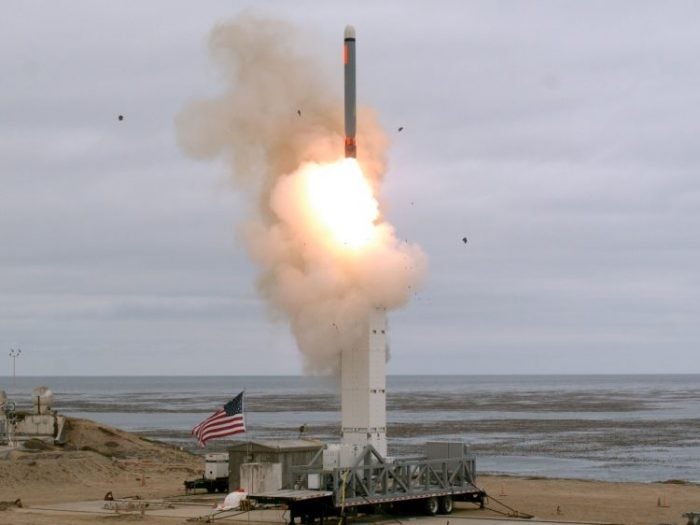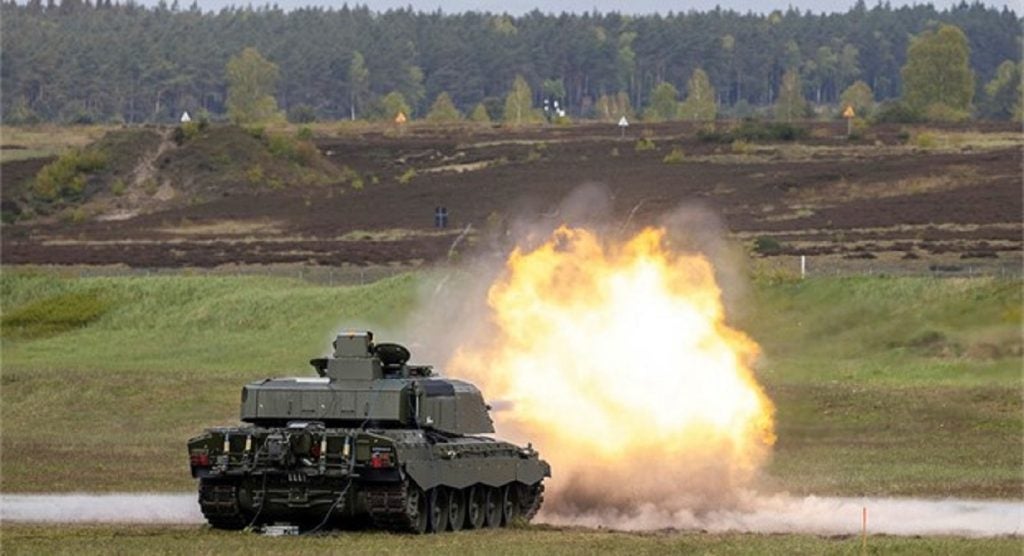
US carries out first post-INF cruise missile test
The US has tested a new ground-launched cruise missile capable of covering ranges previously banned under the Intermediate-Range Nuclear Forces Treaty (INF).
According to the Department of Defence (DoD), the cruise missile travelled 500km (310 miles) before ‘accurately’ hitting its target.
The DoD launched the cruise missile on Sunday from San Nicolas Island, California. The distance the cruise missile reached fell within the lower end of the range of missiles previously banned from development and use by the INF.
Royal United Services Institute (RUSI) UK nuclear policy research fellow, Sam Dudin, told Army Technology: “[The] Intermediate range, ground-launched cruise missiles (GLCM) gives the US a long-range precision strike capability from a platform that is cheaper and more survivable than a maritime or air platform.
“Regarding the military balance between the US and Russia, this could enhance the conventional deterrence capability of the US, depending upon where these missiles are deployed.”
How well do you really know your competitors?
Access the most comprehensive Company Profiles on the market, powered by GlobalData. Save hours of research. Gain competitive edge.

Thank you!
Your download email will arrive shortly
Not ready to buy yet? Download a free sample
We are confident about the unique quality of our Company Profiles. However, we want you to make the most beneficial decision for your business, so we offer a free sample that you can download by submitting the below form
By GlobalDataThe US and Russia suspended the 1987 treaty on 2 August after the US complained Russia had consistently violated the treaty through its weapons development. US Secretary of State Mike Pompeo said at the time that Russia ‘is solely responsible for the treaty’s demise’.
The treaty had banned the fielding of all land-based missiles with a range of between 500 and 5,500km (310 and 3,400 miles.)
In a press release, the DoD said: “The test missile exited its ground mobile launcher and accurately impacted its target after more than 500 kilometres of flight.
“Data collected and lessons learned from this test will inform the Department of Defence’s development of future intermediate-range capabilities.”
In a statement released through the Russian state news agency TASS, Russian Deputy Foreign Minister Sergei Ryabkov said: “There can hardly be a clearer and more explicit confirmation of the fact that the United States has been developing such systems for a long time, and preparations for withdrawing from the agreement included, in particular, the relevant research and development.”
Dudin added: “Although Russian integrated air defence systems (IADS) can intercept cruise missiles, doing so will deplete their limited stock of munitions. Another advantage of GLCM is the potential for establishing large magazines of cruise missiles, enhancing the ability of the US to overwhelm Russian IADS.”
After the US announced its suspension of the treaty, Secretary of Defence Mark Esper said: “Now that we have withdrawn, the Department of Defense will fully pursue the development of these ground-launched conventional missiles as a prudent response to Russia’s actions and as part of the joint force’s broader portfolio of conventional strike options.”
The US has yet to say if the missiles will be deployed to active service.
Dudin further commented: “The most likely primary locations [for deployment] are with US allies in the Pacific to enhance US conventional deterrence capabilities focused on the Chinese navy.
“The most likely secondary locations for deployment are NATO members that border Russia and were either part of the Warsaw Pact, in the case of Poland, or were part of the USSR, in the case of the Baltic States (Lithuania, Latvia and Estonia). All four countries are extremely concerned about Russian activity in Ukraine, all four have collective memories of malign Russian behaviour during the Cold War and all four believe that the presence of US forces enhances their conventional deterrence.”
Prior to its suspension of the treaty, the US had begun research into treaty-compliant non-nuclear missiles like the one launched on Sunday. However, conventional systems can be modified to carry a nuclear payload.
Military Times reported that the missile was fired from a Lockheed Martin Mark 41 Vertical Launch System. The missile defence system is deployed in Eastern Europe and in the past Russia has complained the system breaches the INF treaty.







